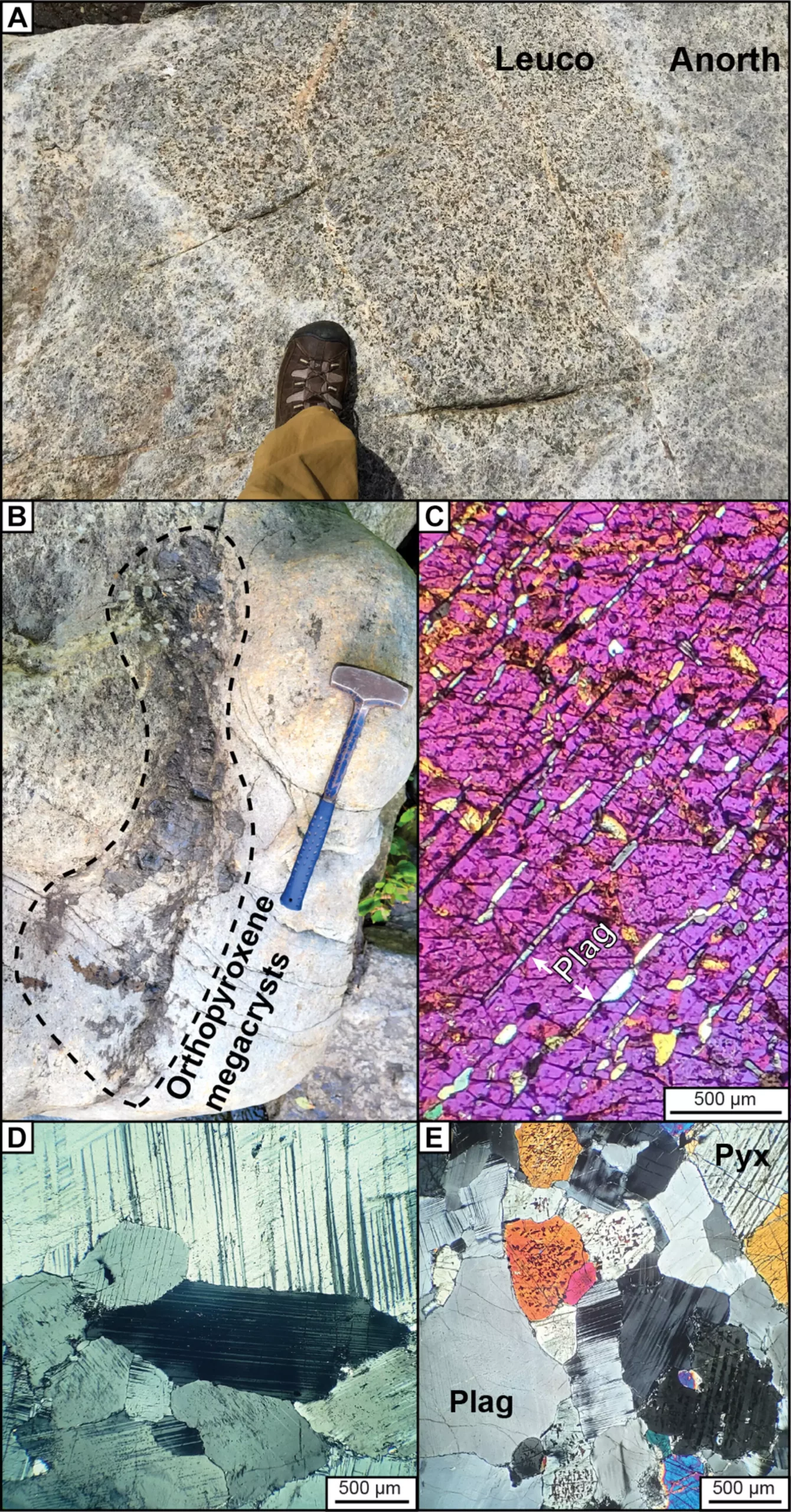An intriguing discovery by a team of researchers has shed light on the formation of massif-type anorthosites, presenting a significant advancement in our understanding of Earth’s geological history. These plagioclase-rich rocks, which have long puzzled scientists due to conflicting theories about their origins, cover vast areas and host valuable titanium deposits.
In a recent study published in Science Advances, researchers led by Duncan Keller and Cin-Ty Lee of Rice University delved into the intricate connections between Earth’s mantle and crust, as well as the tectonic forces that have shaped our planet over billions of years. Focusing on the Marcy and Morin anorthosites from North America’s Grenville orogen, the team analyzed isotopes of boron, oxygen, neodymium, and strontium in the rocks.
Through petrogenetic modeling, the researchers uncovered a fascinating link between the formation of massif-type anorthosites and subducted oceanic crust. The magmas that gave rise to these rocks were found to be enriched in melts originating from oceanic crust altered by seawater at low temperatures. Additionally, isotopic signatures resembling those of other subduction zone rocks, such as abyssal serpentinite, were detected in the anorthosites.
The study’s findings suggest that massif-type anorthosites may have formed during a period of very hot subduction, providing valuable insights into Earth’s thermal and tectonic evolution billions of years ago. This new evidence challenges previous notions about the formation of these rocks and opens up new interdisciplinary avenues for studying Earth’s ancient geological processes.
By combining traditional methods with innovative approaches like boron isotopic analysis, the research team has made significant progress in deciphering the origins of massif-type anorthosites. These rocks, which offer a window into Earth’s past, hold important clues about the planet’s physical evolution and the environmental conditions that existed during their formation.
The study represents a major breakthrough in our understanding of massif-type anorthosites and their significance in unraveling Earth’s geological history. By exploring the complex interplay between mantle dynamics, subduction processes, and crustal evolution, researchers have provided a new perspective on the formation of these enigmatic rocks. The implications of this research extend beyond the realm of geology, offering valuable insights into the broader tectonic and thermal history of our planet.


Leave a Reply